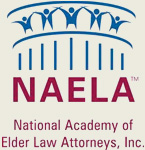Basic 4 | Various Trusts | Other Planning Methods | Definitions and Considerations | Vermont Intestate Will | Top Estate Planning Mistakes | Estate Tax Exemptions | 10 Estate Planning Myths | Protect Your Home
Other Planning Methods
- Reserved Life Estate Deed with Retained Powers: A reserved life estate deed is a deed in which the donors transfer their property (best used for personal residence) to others, usually children, and reserve to themselves the present ownership and right to sell, lease, mortgage or convey the property during their lifetimes. This keeps control with the original owners during their lives, but passes the property outside probate on their deaths. It gives the recipients a step-up in the tax basis of the property to date of death value, avoiding Capital Gains Tax under current tax law. It also is not considered a penalized transfer for Medicaid purposes, but does avoid Medicaid recovery by avoiding probate.
- Lifetime Gifting: Lifetime gifting can be a valuable planning method for assets and for personal items. With personal items, if a person isn’t using the item and wants it to go to a special person, give it to them now. They will enjoy it and the one making the gift benefits from seeing the joy the gift brings. With real assets, the same applies and, in addition, gifting will reduce any potentially taxable estate and may assist in Medicaid planning. Annual gifts can be made up to $12000.00 per year per recipient. There is no limit on the number of recipients and married couples can combine gifts to a maximum of $24000.00 per recipient per year. Also, if the Estate is not likely to be taxable and gifts don’t exceed $1 million dollars per giver, there really is no tax consequence of larger gifts. Additional gifting may be accomplished by using 529 plans for education savings. Annual gifts are also often made to what is known as a Crummey Trust, deferring actual receipt of the asset to the donor. The annual exemption only applies to Gift Taxes and has no bearing on Medicaid rules, which deal with gifting substantially differently. Lifetime gifting may be an important component of Medicaid planning, although the Deficit Reduction Act of 2005 has made all gifting by elders much riskier in a Medicaid context than it has been prior to 2-8-2006.
- POD and TOD Accounts: Relatively new in planning is the ability to arrange bank and brokerage accounts as POD (Pay on Death, for bank accounts) and TOD (Transfer on Death, for brokerage accounts). This allows you to designate a beneficiary of the account, similar to naming a beneficiary for life insurance, without the need to make the account a joint account.
- Joint Ownership: Joint ownership, aside from husband and wife (or domestic partners) is often more a danger than a benefit. Under most joint ownership situations, the asset is available to the creditor of any one joint owner. The asset is also available for use by any one owner and may be withdrawn or cashed in by that one person. Real estate joint ownership requires all owners to sign to transfer, thus giving each owner a veto power. Joint ownership is a survivor interest. Placing one child’s name on an account means the money will pass outright, and outside probate, to that child. If they are expected to share with siblings, there is no requirement that they do so and if they do share there is a potential gift tax consequence. There may be capital gains tax issues with transfer by joint account. Joint ownership is often not a good Medicaid planning technique. These accounts are frequently used as “do it yourself” probate avoidance estate planning. With the advent POD and TOD accounts, Joint Ownership is no longer necessary even for small estates. Aside from husband and wife situations, Joint Ownership is NOT a great planning technique, generally.


